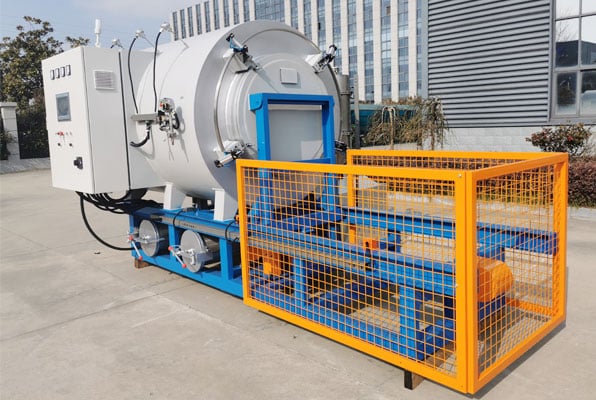Metal components often face a troublesome problem during traditional cleaning processes – post-cleaning rust. Whether it’s residual moisture from water-based cleaning or corrosive components in chemical solvents, these can accelerate metal oxidation, affecting product precision and lifespan.
The emergence of vacuum cleaning ovens has completely transformed this situation. Not only do they efficiently remove contaminants like oil stains and dust, but they also ensure zero corrosion and oxidation of metal parts after cleaning. So how exactly does this work?
- Why does traditional cleaning cause metal rust?
Before exploring the advantages of vacuum cleaning ovens, let’s examine the pain points of traditional cleaning methods:
Water-based cleaning: Residual moisture easily leads to metal oxidation, particularly affecting materials like cast iron and carbon steel more severely.
Chemical solvent cleaning: Acidic or alkaline cleaning agents may corrode metal surfaces and even alter material properties.
Incomplete high-temperature drying: Insufficient drying leaves residual moisture that can still cause rust formation.
These issues are especially critical in precision manufacturing (such as automotive parts, medical devices, and aerospace components), where even minor rust can lead to assembly failures or performance degradation.
- The “zero-corrosion” secret of vacuum cleaning ovens
Vacuum cleaning ovens fundamentally prevent metal rust through unique vacuum environment + controlled atmosphere technology. The core principles include:
(1) Oxygen-free cleaning environment prevents oxidation
After vacuum pumping, the oxygen content inside the chamber is extremely low (typically <0.1%), preventing metal parts from reacting with oxygen during high-temperature cleaning and naturally avoiding oxidative rust.
Compared to traditional open cleaning, the vacuum environment is particularly suitable for oxidation-prone materials like stainless steel, titanium alloys, and aluminum alloys.
(2) High-temperature pyrolysis + inert gas protection
High-temperature decomposition of contaminants: Heating to 400-600°C in a vacuum state directly gasifies oils, polymers and other pollutants without chemical solvents.
Inert gas backfilling: Some processes inject nitrogen (N₂) or argon (Ar) during the cooling phase to further prevent high-temperature metals from contacting air.
(3) Complete moisture removal and thorough drying
In a vacuum environment, moisture is extracted during the low-temperature phase, avoiding the “re-rusting” problem caused by incomplete traditional drying.
Especially suitable for humidity-sensitive products like precision bearings, molds, and electronic connectors.
- Practical application cases: How vacuum cleaning ovens solve rust problems?
Case 1: Rust spots on automotive gears after cleaning
An auto parts manufacturer found rust spots appearing on gears within 48 hours of storage after traditional alkaline cleaning. After switching to vacuum cleaning ovens:
Cleaning temperature: 500°C (completely decomposes anti-rust oil residue)
Cooling method: Nitrogen-protected cooling
Result: No corrosion after 30 days of storage, with surface cleanliness reaching Sa 2.5 grade.
Case 2: Oxidation of surgical instruments after high-temperature sterilization
A medical device manufacturer discovered rust on stainless steel surgical forceps after high-pressure steam sterilization. The vacuum cleaning oven solution:
Vacuum level: -0.095MPa (removes moisture and organic matter)
Final treatment: Argon-protected cooling to room temperature
Result: Instrument lifespan extended 3 times, complying with ISO 13485 medical cleaning standards.
- How to choose the right vacuum cleaning oven?
If your metal parts suffer from rust issues, consider these factors when selecting equipment:
✅ Ultimate vacuum level (higher levels better prevent oxidation)
✅ Maximum temperature (must match contaminant pyrolysis needs)
✅ Gas protection options (whether nitrogen/argon interfaces are standard)
✅ Cooling rate control (faster cooling reduces high-temperature exposure time) - Conclusión
Through triple technologies of oxygen-free cleaning, high-temperature pyrolysis, and inert gas protection, vacuum cleaning ovens truly achieve “zero corrosion” of metal parts after cleaning. Whether for precision components, medical tools, or high-value-added metal products, they provide safer and more reliable cleaning solutions.
If you’re also troubled by metal rust issues, why not try vacuum cleaning technology – let cleaning no longer cause secondary damage!

